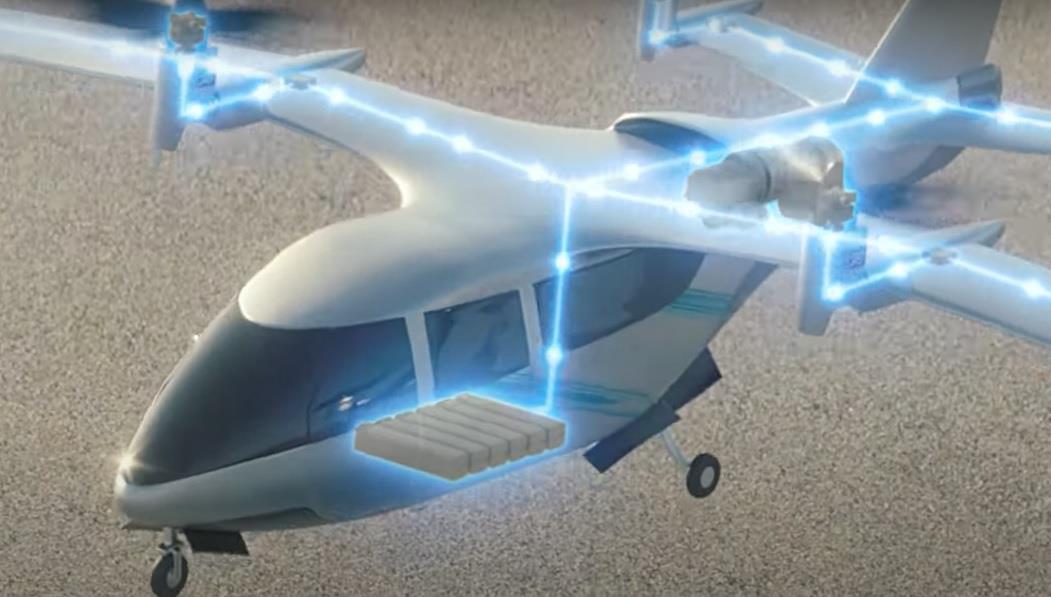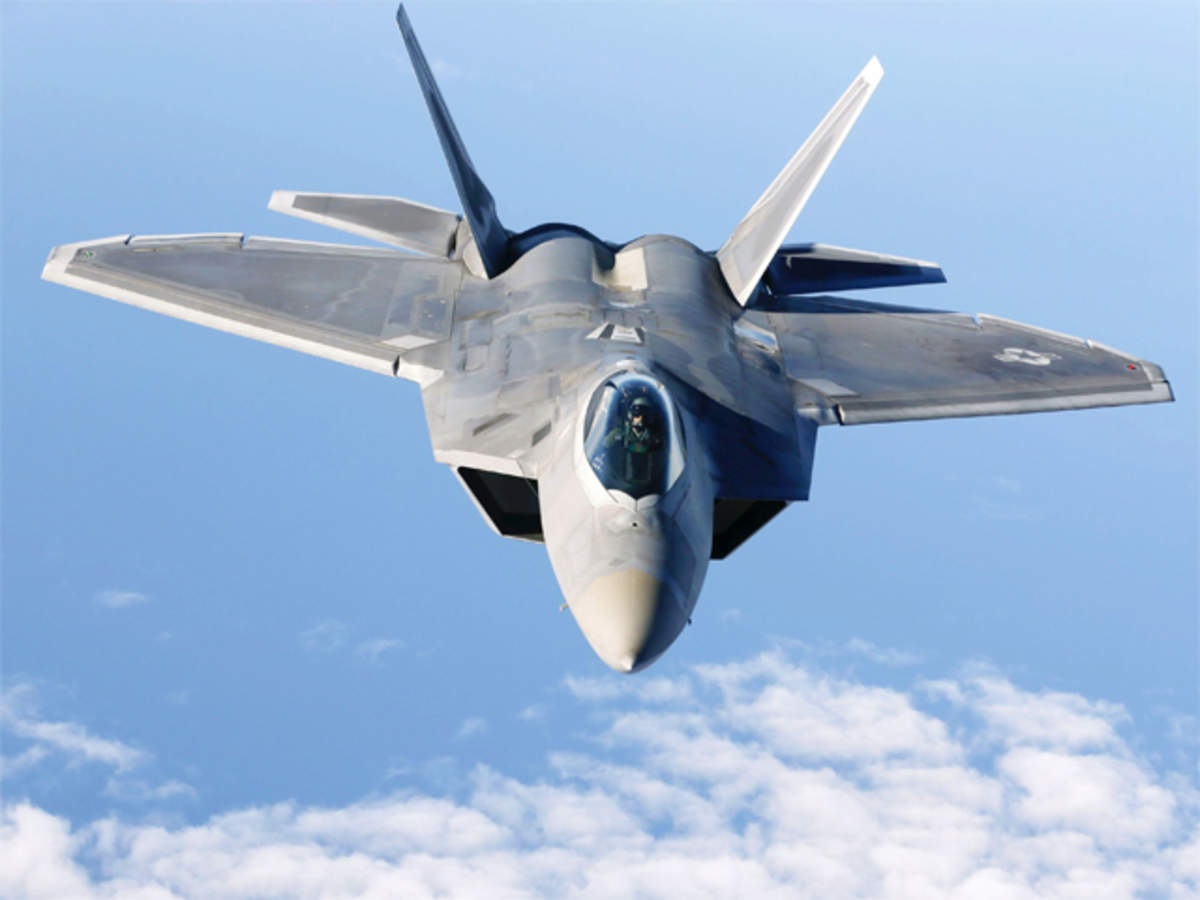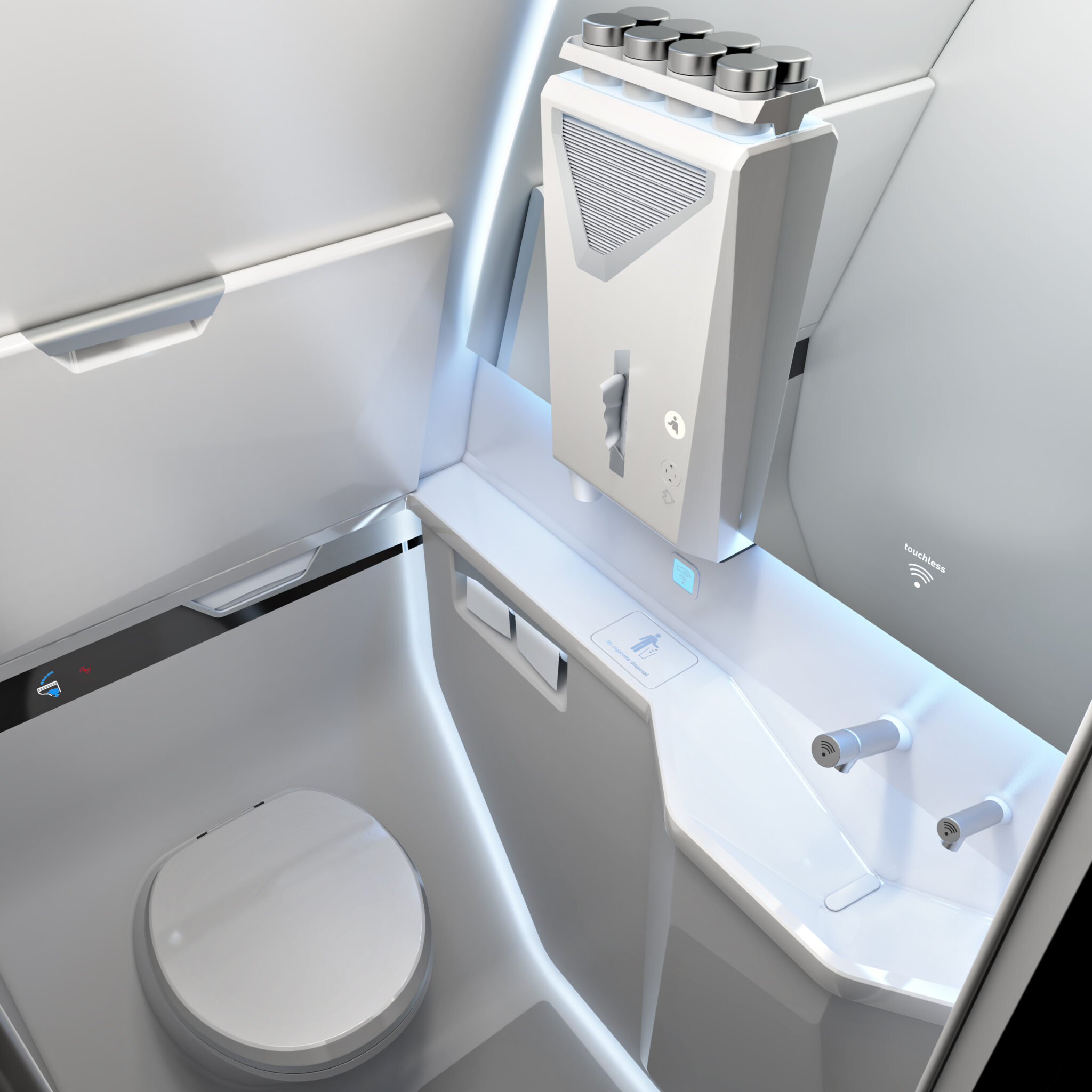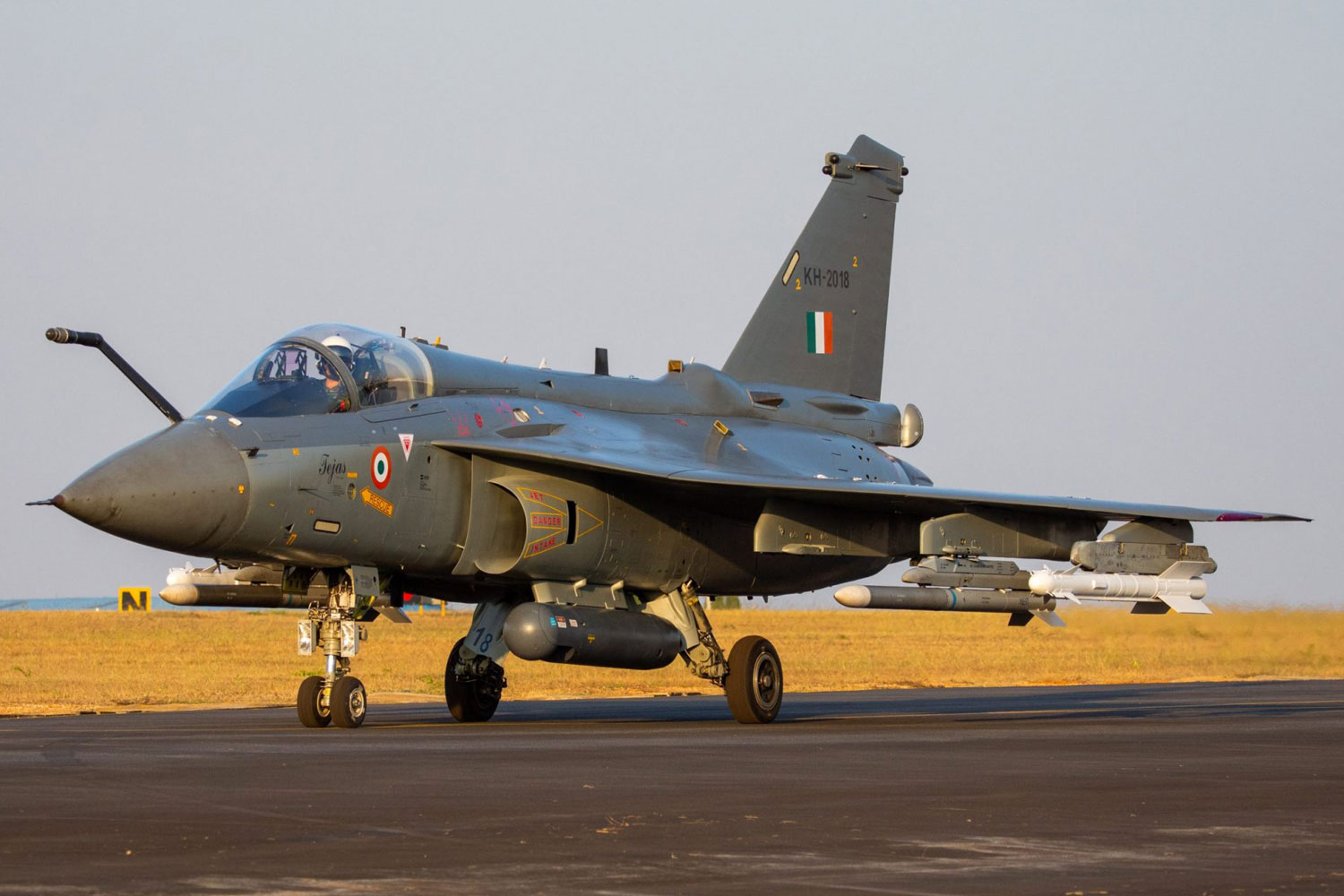PIL filed in Delhi HC to change call sign "VT" on Indian aircraft as it's a ‘symbol of slavery’
Jinen Gada
25 Jun 2022
The registration mark on all the Indian aircraft starts with the call sign VT, which stands for "Victorian Territory and Viceroy Territory," a relic of the British Raj.
The prefix VT, which is the nationality code that each aircraft registered in India is required to carry is generally seen just before the rear exit door and above the windows. All the domestic airlines have the prefix, which is followed by unique alphabets that define the aircraft and who it belongs to.
The registration of the aircraft is required to appear in its Certificate of Registration, and an aircraft can only have one registration in one jurisdiction.
The prefix marks that the aircraft has been registered in the country.
A Public Interest Litigation (PIL) was filed in the Delhi High Court by Ashwini Kumar Upadhyay, a BJP leader and attorney who filed the PIL, claiming that because India is a "Sovereign Socialist Secular Democratic Republic," the Call Sign "VT" violates the Rule of Law, the Right to Freedom, and the Right to Dignity of Persons guaranteed by Articles 14, 19, and 21 of the Constitution.
VT code is a reflection of colonial rule, as claimed by the petitioner, who stated that the registration number of Indian aircraft marks the legacy of 'The British Raj'. The use of the VT symbol denotes us still being Victorian Territory and Viceroy Territory, which is true.
The prefix mark is mandatory in all countries.
“The code is generally seen just before the rear exit door and above the windows. All the domestic airlines have the prefix, which is followed by unique alphabets that define the aircraft and who it belongs to. For example, on Indigo flights the registration VT is followed by IDV, that is, VT-IDV, for Jet, it is VT-JMV,” the petition filed by advocate Ashwini Kumar Upadhyay said.
In 2004, the aviation ministry approached the International Civil Aviation Organisation (ICAO) to change the code, but no decision has been taken so far. It is a code given to us in 1929 by British rulers, denoting us as British territory. India, even after 75 years of Independence, retains the symbol of slavery 'VT'.
In 2016, BJP leader Tarun Vijay raised the issue in Rajya Sabha of changing the registration mark on Indian Airplanes stating it was a reflection of colonial rule.
"Hindustan cannot be a territory of the Viceroy.... Why is India continuing with the VT code?... VT should be changed right away."Tarun Vijay, BJP leader.
The call sign VT was assigned to India during the International Radiotelegraph Convention of Washington, 1927 signed at Washington on 25th November 1927.
Also invoking the provisions of the Constitution, the PIL states that the words "sovereignty and integrity of India" found in the Indian Constitution denote the "wholeness of the country". It is for this sovereignty and integrity that the symbol of British legacy needs to be changed, the petitioner's case essentially is.
A similar plea by different petitioners which sought a change in the call sign from "VT" was dismissed by the Bombay High Court in 2021.
PIL filed in Delhi HC to change call sign "VT" on Indian aircraft as it's a ‘symbol of slavery’
The Bombay High Court noted that while the government had attempted to get the call sign changed and approached the ICAO for the same, there was no statutory duty for the government to do it. As such, a petition for directions for the government to undertake this exercise could not be entertained.
ALSO READ - Centre says ‘VT’ call sign on Indian aircraft doesn’t stand for “Viceroy Territory”
The petition sought to direct the Centre to change the call sign ‘VT’ on Indian aircraft to secure the Sovereignty of India as well as rule of law, right to freedom, and right to dignity of Indians guaranteed under the Constitution, saying countries like China, Pakistan, Nepal, and Sri Lanka had changed the call signs of their aircraft immediately after the independence.
The petitioner submitted that the call sign 'VT' was assigned to India during the International Radiotelegraph Convention of Washington, signed at Washington on November 27, 1927. Like India, every country has a one-or-two-character alphanumeric code for the identity of aircraft. Like the US has 'N', the UK has 'G', UAE has 'A6', Singapore has '9V', and so on.
An online petition was also started a few months back by Mr. Amit Singh, an aviation Safety & Training expert with over 35 years of airline experience. Amit is the founder of an NGO, Safety Matters Foundation which is dedicated to establishing a generative safety culture in aviation.
CLICK HERE TO SIGN THE PETITION
Read next
Rolls Royce unveils Turbogenerator Technology for hybrid-electric propulsion. Here's what's new
Prashant-prabhakar
24 Jun 2022

Rolls Royce has now announced the development of turbogenerator technology, which includes a new small engine designed for hybrid-electric applications. Touted to expand the range of low-emission aircraft on sustainable aviation fuels, the system will be an on-board power source with scalable power offerings and will complement the Rolls-Royce Electrical propulsion portfolio.
World's fastest all-electric aircraft-" Spirit of Innovation" | Representative | bbc.co.uk
How is it different from current battery technology?
By developing turbogenerator technology, that will be scaled to serve a power range between 500 kW and 1200 kW, the company hopes of opening up new longer routes in comparison to current battery technology that enables only short eVTOL and fixed-wing commuter aircraft in and between cities and island-hopping in locations like Norway and the Scottish Isles.
Rolls Royce
Partly funded by the German Ministry for Economic Affairs and Climate Action, the research and development team based in Germany, Norway and Hungary are developing the turbogenerator design and working on its system integration while at the same time focussing on ensuring smart power distribution during flight.
Rolls-Royce will be the leading provider of all-electric and hybrid-electric power and propulsion systems for Advanced Air Mobility and will scale this technology over time to larger platforms. I would like to thank the German Government for their support. As part of our strategy, we are looking at offering the complete sustainable solution for our customers. This means extending routes that electric flight can support through our turbogenerator technology. This will advance hybrid-electric flight and mean more passengers will be able to travel further on low to net zero emissions aircraftRob Watson, President – Rolls Royce Electrical, said
https://vimeo.com/722622606
The batteries will be recharged by the turbogenerator after take-off or power propellers directly, enabling aircraft to switch between power sources in flight.
Earlier this year, Rolls Royce collaborated with Roland Burger to release a market study into the potential of the AAM market for the APAC region- consisting of Australia, China, India, Japan, Singapore, South Korea and New Zealand.
Rolls-Royce is also set to build on our existing network to offer maintenance services for electrical systems. Furthermore, Rolls-Royce Power Systems is able to offer mtu microgrid solutions to support fast-charging of electric aircraft and deliver reliable, cost-effective, climate friendly and sustainable power to vertiportsRob Watson
Reportedly, Rolls Royce had also said it would team up with Luxaviation Group on the development of a planned network of vertiports. The company has also committed to ensuring all new products will be compatible with net-zero emissions operation by 2030, and the entire range of products will be compatible with net-zero by 2050.
SOURCE(s)
COVER: FlightGlobal
Read next
Tata Group-owned Air India has offered to re-hire pilots post their retirement for five years as the airline looks for stability in operations amid talk of acquiring 300 single-aisle planes, according to internal communication. Air India is considering re-hiring these pilots as commanders.
ALSO READ - Air India prepares to add more than 200 aircraft; the most significant order in a long time
Tata Group took control of Air India on January 27 this year
The retirement age for pilots in Air India is 58 like all other employees of the airline. Before the pandemic, Air India used to re-hire its retired pilots on contract but the practice was discontinued after late March 2020.
The contracts of such pilots were also terminated to partially offset the impact of the pandemic. However, pilots at other private airlines fly until they reach the age of 65 years.
"We are pleased to inform you are being considered for post-retirement contract as commander in Air India for a period of 5 years or till you attain the age of 65 years, whichever is earlier, during the period of post retirement contract, you will be paid the remuneration and flying allowances, as admissible, as per policy of Air India to such appointments."Vikas Gupta, Air India Deputy General Manager for Personnel
Pilots are the most expensive asset for an airline and get paid the highest compared to other key roles such as cabin crew and aircraft maintenance engineers.
Moreover, the shortage of adequately trained pilots in the domestic aviation industry has always been an issue.
Interested pilots have been told to submit their details along with written consent by June 23.
With Indian aviation set to grow exponentially, there are plenty of opportunities in the market. And COVID-19 pandemic no longer poses any significant threats to global aviation, the industry has embarked on an upward recovery trajectory.
Naturally, all Indian airlines will be willing to fight hard to get the biggest possible slice of the ever-increasing pile. To be able to meet the increased demand, they will need more manpower, manpower that most airlines laid off during the pandemic in a bid to keep costs low. As a result, several carriers are scrambling to hire talent before the competition.
Read next
IAF’s Make In India fighter jet project takes wings, around 100 aircraft to be built at home
Jinen Gada
24 Jun 2022

In a most important boost to the Make in India initiative, the Indian Air Force (IAF) plans to construct around one hundred advanced fighter jets in India, for which it has begun talks with the international plane manufacturers.
The Aatmanirbhar push will, for the first time, see Indian foreign money being used to make payments for nearly 70% cost of the project.
The Indian Air Force has plans of acquiring 114 Multirole Fighter Aircraft (MRFA) under the 'Buy Global and Make in India' scheme under which Indian companies would be allowed to partner with a foreign vendor.
Recently, the Indian Air Force held meetings with foreign vendors and asked them about the way they would carry out the Make in India project.
The Indian Air Force to build around 100 advanced fighter jets in India
As per the plan, after the initial 18 aircraft are imported, the next 36 aircraft would be manufactured within the country and the payments would be made partially in foreign currency and Indian currency.
The last 60 aircraft would be the main responsibility of the Indian partner and the government would make payments only in Indian currency. The payment in Indian currency would help the vendors to achieve the over 60% 'Make-in-India' content in the project.
The Indian Air Force has to rely heavily on these 114 fighter jets for maintaining its superiority over the neighbouring rivals Pakistan and China.
The 36 Rafale aircraft procured under emergency orders helped immensely in maintaining an edge over the Chinese during the Ladakh crisis which started in 2020 but the numbers are not enough and more such capability would be required by it.
The IAF has plans of buying 114 planes, which would be used for augmenting its fight competencies and changing its outgoing fleet of MiG series planes.
The force has already placed orders for 83 of the LCA Mk 1A aircraft but it still requires a higher number of capable aircraft as a large number of MiG series planes have either been phased out or are on their last legs.
The IAF is also looking for a cost-effective solution for its fighter jet requirement as it wants a plane that is low on operational cost and gives more capability to the service.
The IAF is highly satisfied with the operational availability of the Rafale fighter jets and wants similar capability in its future aircraft.
Read next
Airbus unveils new retrofittable touchless lavatory for A320 and A330ceo family
Radhika Bansal
23 Jun 2022

Airbus has partnered with Diehl Aviation to offer a touchless toilet retrofit option for its A320 and A330ceo aircraft, which was unveiled recently at the Aircraft Interiors Expo in Hamburg.
Passengers are more hygiene-conscious than ever as a result of the pandemic. As part of its Health Onboard objective, Airbus seeks to build trust in travel, and the touchless toilet now joins the manufacturer's other endeavours to create a safer environment on board its planes. Top-down cabin air flows, HEPA filters, and antimicrobial polishes and coatings are among them.
American Airlines is the world's largest operator of the A320 family of aircraft.
The water faucet, waste flap, toilet lid, and toilet flush buttons all become touchless as part of Diehl Aviation's touchless toilet conversion. Airbus' existing and in-development line-fit touchless alternatives are supplemented by the retrofit option.
American Airlines is the world's largest operator of the A320 family of aircraft. Cathay Pacific, Turkish Airlines, and Delta Air Lines are among the largest A330ceo operators with this retrofit option.
In addition to providing a more sanitary environment for passengers and crew, Airbus claims that "the low weight of the kit, low purchase price, and the same part number for a wide range of Airbus aircraft types, keeping costs and inventory low" are among the benefits for airlines.
Airbus unveils new retrofittable touchless lavatory for A320 and A330ceo family
The refit is also simple enough that it may be accomplished overnight without requiring the aircraft to be taken out of service for an extended period.
Diehl Aviation is one of the leading suppliers of cabin interiors and aircraft systems and currently employs over 4,000 people. Its clients include Airbus, Boeing, Embraer, and military partners around the world.
“We are very proud to now further strengthen our long-standing trustful cooperation with Airbus also in sales. Jointly with Airbus, we can establish our retrofit solutions for the touchless lavatory even faster and with a broader scope in the market.”Harald Mehring, Chief Customer Officer, Diehl Aviation
Thanks to its partnership with Airbus, Diehl Aviation will now be able to market its touchless toilet through the aircraft manufacturer’s sales channels.
As the industry recovers from the pandemic and investment in new technologies continues, we are likely to see further developments in the future, like the touchless toilet retrofit, that lead to cleaner cabins.
Read next
India has emerged as the top contender for a Malaysian requirement of Light Combat Aircraft (LCA) with a package deal that would include maintenance and spares for the nation’s Russian-origin Su 30 fighter jets. The Malaysian air force is looking to buy 18 new light fighter jets.
India is offering an appealing package for LCA Tejas for this deal. It has committed that it can keep Malaysia’s fleet of 18 Su 30 MKM jets flightworthy, given the vast spares reserve and technical expertise available with Hindustan Aeronautics Limited (HAL).
India has emerged as the top contender for a Malaysian requirement of Light Combat Aircraft (LCA)
Other contenders for the deal -- primarily South Korea and China -- are not in a position to offer this package as they do not have backend contracts with Russian manufacturers to work on the Sukhoi fighters. Malaysia has 18 of the Su 30 MKM fighters, which are very similar to the MKI version that is in service with the Indian Air Force.
It is learnt that detailed discussions on the dual package have taken place and a final decision may be possible under the government-to-government route. Several nations like Malaysia have been impacted by western sanctions on Russia that have made ordering spares and other supplies for legacy military equipment challenging.
The Tejas is an indigenously developed, single-engine, fourth-generation, high-agility, multirole, supersonic light combat aircraft.
India has priced LCA Tejas at around USD 42 million per unit for the package.
The LCA Tejas MK1A has been designed by the Aeronautical Development Agency (ADA) and manufactured by HAL. It is an advanced fly-by-wire (FBW), 4+ generation fighter and comes with a glass cockpit with a satellite-aided inertial navigation system.
The advanced version of the MK1, the MK-1A is a multi-role aircraft, equipped with improved features, such as mid-air refuelling, Beyond Visual Range (BVR) missile capabilities, updated Radar Warning Receiver (RWR), Active Electronically Scanned Array (AESA) Radar and Electronic Warfare (EW).
It can carry a payload of 3,500 kg, including long-range BVR missiles and standoff and precision-guided weapons. It has a service ceiling of 50,000 ft which enables the aircraft to conduct offensive air support and air combat operations. The LCA Tejas is an integral part of the Modi government’s “Make in India” initiative.
It is to be noted that the Indian government has set an annual export target of USD 5 billion, or Rs 36,500 crore by 2025.
Madhavan noted Tejas’ superior performance levels to the Chinese JF-17. He stated that the Tejas is equipped with a better engine, radar system, and electronic warfare suite and has the capability of air-to-air refuelling, something the Chinese aircraft lack.
“We are looking at exports very seriously. A sizable number of countries are showing lots of interest in the platforms we are producing, as they are world-class. We are in talks with so many countries”R Madhavan, Hal Chairman and Managing Director
Explaining the potential for the export of the LCA Tejas, Defence Minister Rajnath Singh had stated that the Tejas were “not only indigenous but better than its foreign equivalents on several parameters and also comparatively cheaper”. He had asserted that the first export order for the procurement of Tejas is likely to come by in the next few years.




Comment